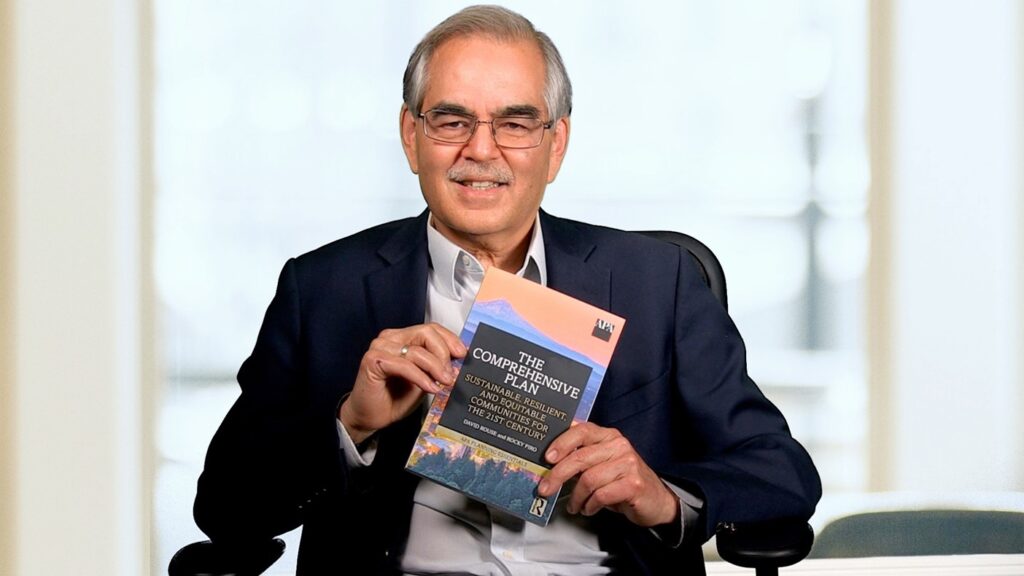Planetizen describes itself as “a community of planning intelligence – a fiercely independent platform that creates, curates, and amplifies stories and resources to inform planning and people passionate about planning.” Knowing Planetizen’s reputation and the many leading professionals who have taught courses through its on-demand education program, I was delighted to be invited by Editorial Director James Brasuell, AICP to travel to Los Angeles to record three online courses. The courses cover comprehensive planning, green infrastructure, and planning for disruptive change.
After much preparation (frankly more than I anticipated!), I worked with film editor/producer Jake Johnson to record the courses in Planetizen’s Koreatown studio over a day and a half in May 2023. Each course must be at least one hour long to qualify for AICP continuing maintenance credits, a requirement I had no problem exceeding given the rich subject matter. While I was initially somewhat apprehensive, it was a pleasure to work with Jake in what proved to be a relaxed studio setting. The following paragraphs provide brief summaries of the content of each course.

The 21st Century Comprehensive Plan explores how the traditional 20th century comprehensive planning model is changing to address the need for local communities to address critical 21st century challenges. It draws on The Comprehensive Plan: Sustainable, Resilient, and Equitable Communities for the 21st Century (Routledge 2022), the book I co-wrote with Rocky Piro, FAICP. The course begins with an overview of the purpose and importance of the comprehensive plan, its historic development, and the current state of practice. It then covers the planning process, the substantive contents of the plan, and effective plan implementation. The course concludes with thoughts on how the comprehensive plan of the future can and must evolve to yield truly sustainable, resilient, and equitable outcomes.
Green Infrastructure is a term that has taken on different meanings in planning and design practice. At its essence, it means integrating nature with the built environment to provide benefits for people and ecosystems. This course begins by defining green infrastructure, providing examples at different scales of concern, and identifying the co-benefits provided. Philadelphia is highlighted as a case study integrating a citywide green infrastructure network with green stormwater infrastructure at the neighborhood and site scales. The course then addresses how to monetize the co-benefits provided by green infrastructure through funding and financing mechanisms. It concludes by exploring the relationship of green infrastructure to climate change, equity, and technology.
The 21st century is a time of accelerating, disruptive change that is profoundly impacting local communities. Planning in an Era of Disruptive Change presents a framework and approach that can be used by communities to make sense of and prepare for the uncertainty that comes with change. It begins with the historic context for 21st century change and the role of the COVID-19 pandemic in accelerating and magnifying its impacts. It then provides an overview of the Drivers of Change framework, which I developed with Ben Hitchings, FAICP, Principal of Green Heron Planning, LLC. Examples of emerging best practices by communities to address selected drivers of change are presented, along with a strategic planning process to proactively and holistically prepare for change. Bottom line for planners: the planning practices of the past are inadequate to deal with the uncertainty of the future, and planners need new tools and approaches to help communities succeed in a rapidly changing world.
After editing and production by Jake Johnson, the courses are available through Planetizen’s Education and Training in Urban Planning subscription service. Thanks to James Brasuell and his Planetizen colleagues for making this possible; I hope planners will find them to be useful resources!
